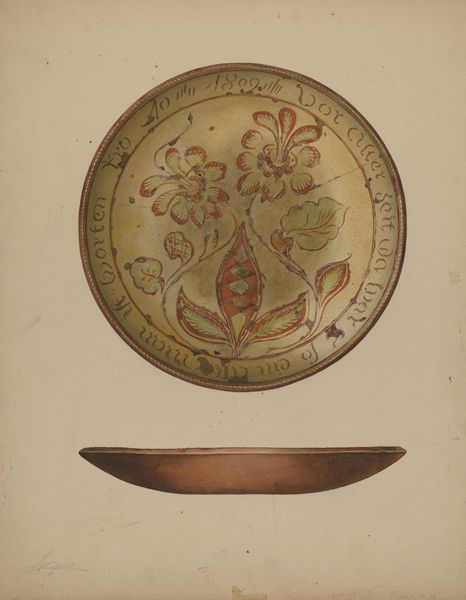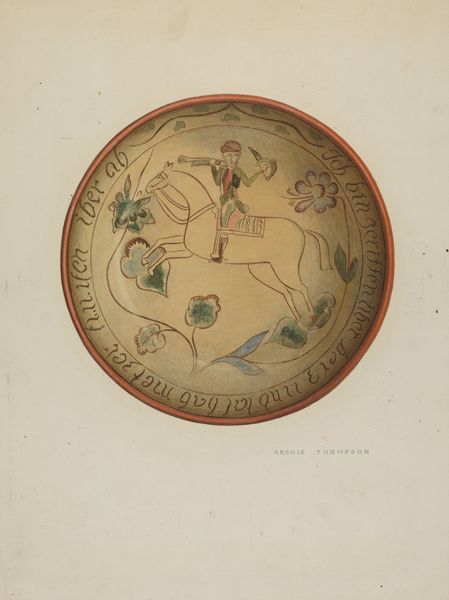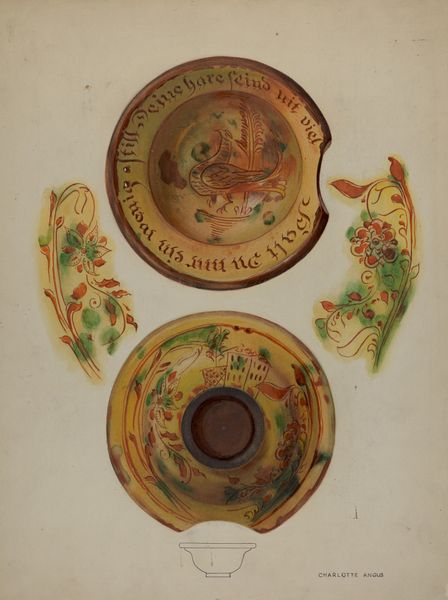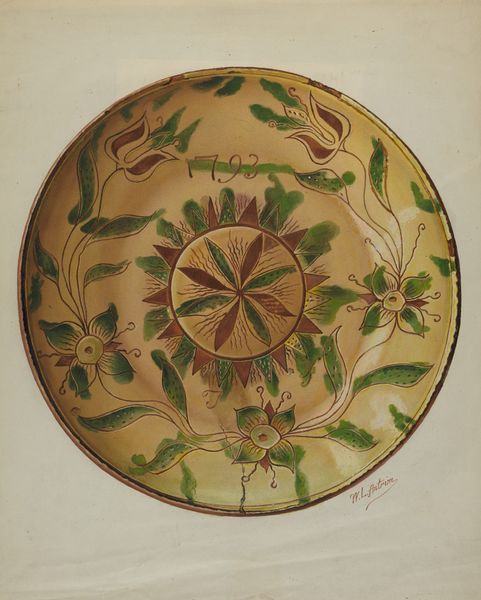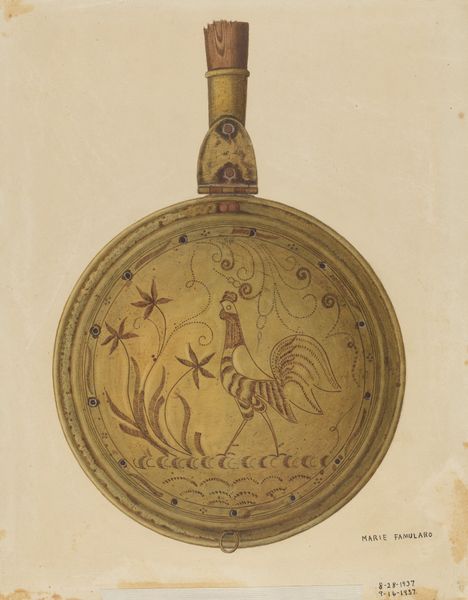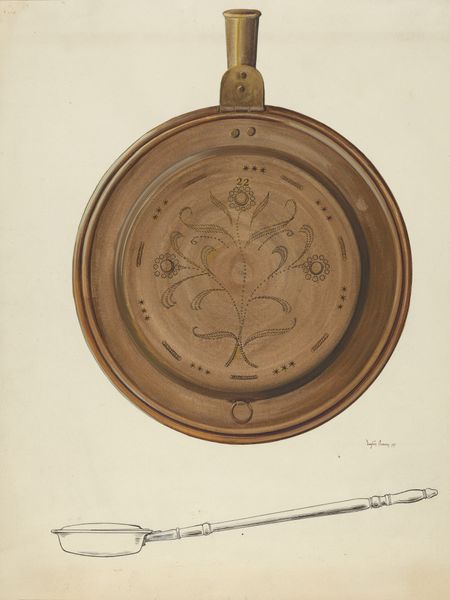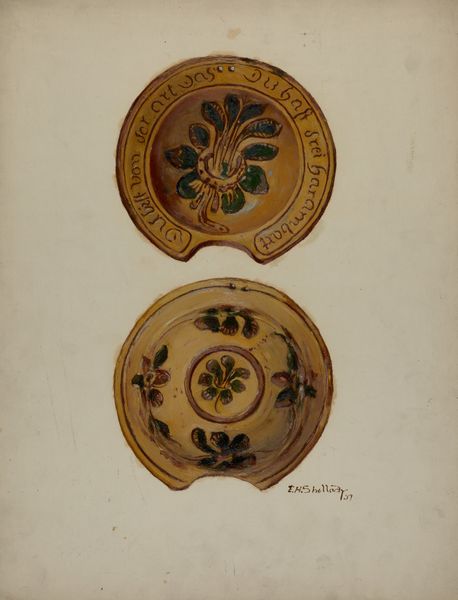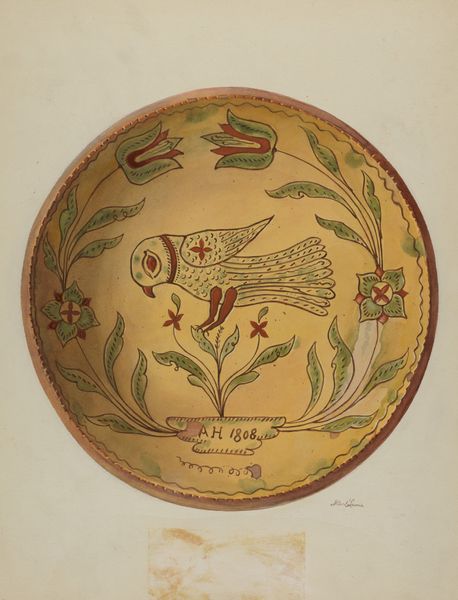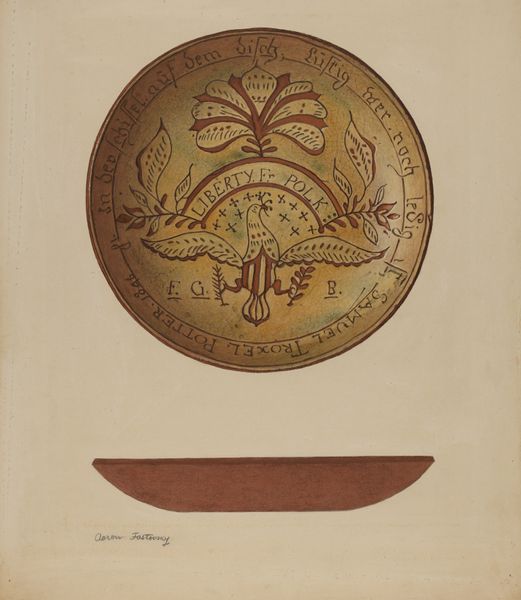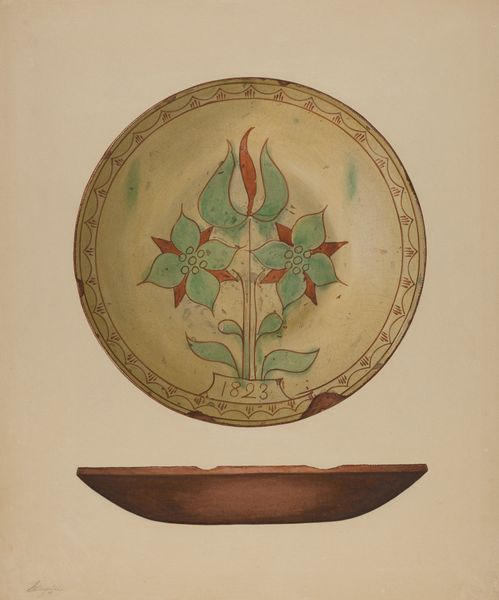
drawing, ceramic, watercolor, earthenware
#
drawing
#
water colours
#
pottery
#
ceramic
#
watercolor
#
earthenware
#
stoneware
#
folk-art
#
watercolor
Dimensions: overall: 50.3 x 38.1 cm (19 13/16 x 15 in.)
Copyright: National Gallery of Art: CC0 1.0
Curator: This object before us is a "Pa. German Plate" from around 1936. What we're looking at is a rendering in watercolor and ink of an earthenware piece. Editor: Oh, I like that it feels old and new at the same time. The muted tones, the slight imperfections of the lines... it has a warm, homemade quality. Like something you'd find in your grandmother’s attic, filled with stories. Curator: It does, and it reflects the historical significance of Pa. German folk art. These decorative plates were often celebratory or commemorative, tied to important family events. This draws a distinct connection with other forms of domestic artistry across diasporic communities. Editor: Family is definitely the feeling I get. Look at the central motif: the house. It anchors everything, doesn't it? Protected, perhaps. Curator: Exactly! The architecture represents familial roots and community. Jacob Funck's name inscribed below, along with the date 1804, signifies legacy and generational continuation. It's fascinating how visual arts intersect with social structures. The artwork challenges prevailing norms, offering spaces to empower marginalised voices. Editor: True, you see it speaking to community. For me, the somewhat primitive floral designs add a whimsical element to it. Almost like a child's drawing but one made by steady hands. It gives a sense of tradition and time passing, yes? Curator: Absolutely. Folk art operates outside the academic artistic hierarchy. This aesthetic subverts elite artistic ideals, emphasizing accessibility, utility, and direct representation of shared cultural experiences, allowing to consider the identity in the face of modernisation. Editor: It all creates a cozy image. Something that makes you want to know more. I imagine these plates being present through generations, celebrating births and marriages. Curator: They often were, or marked milestones like establishing a home, echoing sentiments of belonging. This artistic rendering reminds us that folk traditions can articulate community strength, preserving and honoring social identity. Editor: This piece serves as a touching snapshot of lives from generations ago. Almost whispering across the time that divides us from those lives. Curator: Precisely; understanding how these practices reflect socio-political realities enriches the legacy, making folk art central to a broader narrative of our past.
Comments
No comments
Be the first to comment and join the conversation on the ultimate creative platform.
